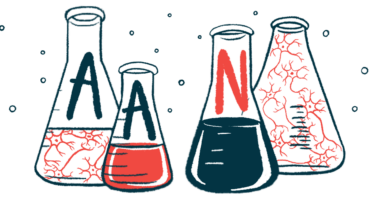Why People With Rare Diseases Should Spend More Time With Kids

“But Jesus called them unto him, and said, Suffer little children to come unto me, and forbid them not: for of such is the kingdom of God.” — Luke 18:16
As a teacher, this Bible passage always resonates with me.
Last November, I traveled back home to Maine from Texas to spend Thanksgiving and Christmas with my family. My myasthenia gravis (MG) had been acting up, and spending time with my nieces and nephews — not to mention the adults — was something I really needed.
I’m a lucky guy. I have nine nieces and nephews who range in age from 3 to 40. I take an online course in Native American history with my nephew Lucas. I hide candy and other goodies in my bedroom each night and look around with amazement when the younger ones arrive. I tell them the only possible explanation is that fairies left it while I was asleep.
Unfortunately, when I arrived in Maine, I was in the middle of a severe myasthenic flare-up that would progress to my first myasthenic crisis.
I hadn’t seen the kids since August 2020 because COVID-19 made travel unsafe for immunocompromised people. Since my last visit, the effects of prednisone and lack of exercise had caused me to gain 47 pounds. My speech was so slurred it was almost unintelligible. Walking was impossible without assistance, and the weak muscles in my throat and mouth prevented me from eating and drinking. On the outside, I wasn’t the uncle they knew. I was frustrated and depressed.
Severe exhaustion kept me in bed most days. The kids would creep upstairs quietly, pause outside my door, and whisper among themselves. As best I could, I’d call them in. The door would open slowly and in they’d come. The first time, I could see their trepidation. I wasn’t the uncle they knew.
They gathered at the bedside, and I gave them the best hugs I could manage. They wanted to hold my cane, and my gripper proved an incredible toy. When I demonstrated how I put socks on using my special device, 3-year-old Hazel asked if it was magic. We had to do it over and over. I sealed the deal when I opened the bedside table and produced candy.
Caring and concern soon replaced their fear. Harlow, 5, became my nurse. She would ask me if I needed any medicine. What about tissues? Need any water? She moved the rugs and toys so I wouldn’t fall over them. Her brother Atticus wanted to know if I had given thought to a career in the NFL. (Not once.) The darkest days were made brighter with them.
Rare diseases such as MG can separate us from the ordinary rhythms of daily life. We may use canes, wheelchairs, oxygen canisters, or other tools that can be scary for young children.
With a little patience and tenderness, children can enter the world of rare disease. In fact, exposing them to our limitations can be extremely positive. Fears surrounding illness and those with different abilities give way to compassion and empathy. A whole new world opens up.
I know many of us in the rare disease community want to share our lives with others and be a part of the world around us. If we expose young kids to our world, they grow up with an inclusive view, and don’t see us as apart from them.
All of us — those with rare illnesses and our family, friends, and caregivers — need to spend time with the young. We should be a part of their everyday lives: playing, sometimes exhibiting symptoms, and inviting fairies to come at night. These are investments in a future where there are fewer stigmas and fears about illness.
Under the best circumstances, raising children requires energy and commitment. Some MG patients feel parenthood is not an option due to the challenges of the disease, but that’s not always the case. Parents with MG can help make rare disease merely another part of life.
One day, Harlow patiently explained to me why she believed Santa was real. “The reindeer can’t make all those toys. They don’t have any fingers!” I don’t know what Ockham would say about that reasoning. I do know that if we adults could share in Harlow’s innocence and wonder, this would be a much better world — for those dealing with illness and for everyone else.
Let’s spend as much time as possible among children. I strongly believe this will help bring about the promised kingdom.
Note: Myasthenia Gravis News is strictly a news and information website about the disease. It does not provide medical advice, diagnosis or treatment. This content is not intended to be a substitute for professional medical advice, diagnosis, or treatment. Always seek the advice of your physician or other qualified health provider with any questions you may have regarding a medical condition. Never disregard professional medical advice or delay in seeking it because of something you have read on this website. The opinions expressed in this column are not those of Myasthenia Gravis News or its parent company, BioNews, and are intended to spark discussion about issues pertaining to myasthenia gravis.








Comments